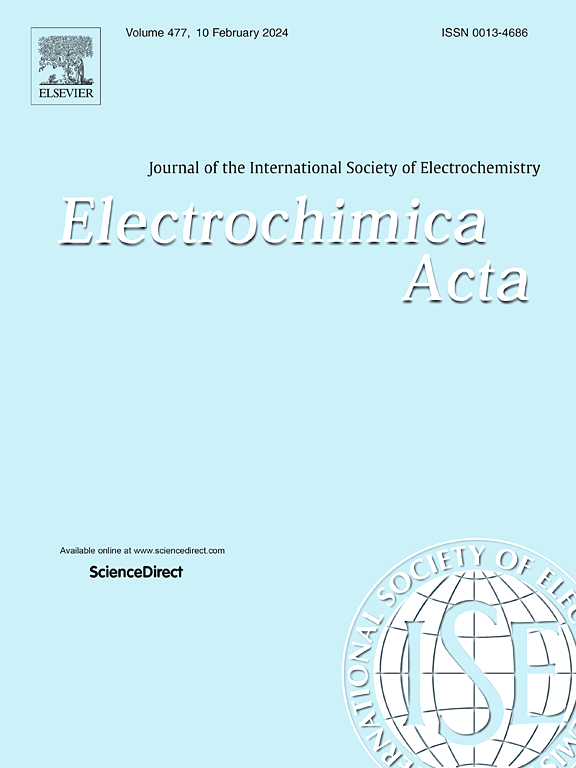Simplified synthesis of N, S co-doped ordered mesoporous carbon cathode via a one-step impregnation technique for superior Zn-ion hybrid supercapacitors
IF 5.5
3区 材料科学
Q1 ELECTROCHEMISTRY
引用次数: 0
Abstract
Aqueous zinc-ion hybrid supercapacitors (ZHSCs) are emerging as promising energy storage devices due to their safety and low cost. The development of cathode materials with superior performance has become a focal point in ZHSC research. Herein, N, S co-doped ordered mesoporous carbons (N, S-OMC) were synthesized via a one-step impregnation of pyrrole and 2-thiophenemethanol into the mesopores of silica templates. The effect of the pyrrole-to-2-thiophenemethanol feed ratio on the microstructure and electrochemical performance of N, S-OMC was examined. The optimal electrochemical performance of N, S-OMC-25 can be attributed to the synergistic effects of well-controlled N and S doping levels, high content of pyridine N, numerous defect sites, good conductivity, ordered mesoporous channels, and a large surface area, all of which provide numerous accessible active sites for charge storage and enhanced electrochemical kinetics in ZHSCs. The N, S-OMC-25-based ZHSCs device demonstrated a high specific capacity (269 ± 1 F/g), high energy density (82 Wh/kg), and outstanding cyclic stability, retaining 95 % capacity after 10,000 cycles in 1 M ZnSO4 and 95 % after 60,000 cycles in 3 M Zn(CF3SO3)2. This work simplifies the preparation of N, S-OMC via the template method and introduces N, S-OMC carbon materials for use in aqueous ZHSCs devices.


一步浸渍法简化合成N, S共掺杂有序介孔碳阴极用于高性能锌离子杂化超级电容器
水性锌离子混合超级电容器(ZHSCs)由于其安全性和低成本的优点,正成为一种有前途的储能器件。开发性能优良的正极材料已成为阴极材料研究的热点。本文通过一步浸渍吡咯和2-噻吩乙醇的方法合成了N, S共掺杂有序介孔碳(N, S- omc)。考察了吡咯-2-噻吩-乙醇进料比对N, S-OMC微观结构和电化学性能的影响。N, S- omc -25的最佳电化学性能可归因于良好控制的N和S掺杂水平、高吡啶N含量、大量缺陷位点、良好的导电性、有序的介孔通道和大表面积的协同作用,所有这些都为zhsc中的电荷存储和增强的电化学动力学提供了大量可达的活性位点。基于N, s - omc -25的ZHSCs器件具有高比容量(269±1 F/g)、高能量密度(82 Wh/kg)和出色的循环稳定性,在1 M ZnSO4中循环1万次后保持95%的容量,在3 M Zn(CF3SO3)2中循环6万次后保持95%的容量。本研究通过模板法简化了N, S-OMC的制备,并介绍了用于水性zhsc器件的N, S-OMC碳材料。
本文章由计算机程序翻译,如有差异,请以英文原文为准。
求助全文
约1分钟内获得全文
求助全文
来源期刊

Electrochimica Acta
工程技术-电化学
CiteScore
11.30
自引率
6.10%
发文量
1634
审稿时长
41 days
期刊介绍:
Electrochimica Acta is an international journal. It is intended for the publication of both original work and reviews in the field of electrochemistry. Electrochemistry should be interpreted to mean any of the research fields covered by the Divisions of the International Society of Electrochemistry listed below, as well as emerging scientific domains covered by ISE New Topics Committee.
 求助内容:
求助内容: 应助结果提醒方式:
应助结果提醒方式:


